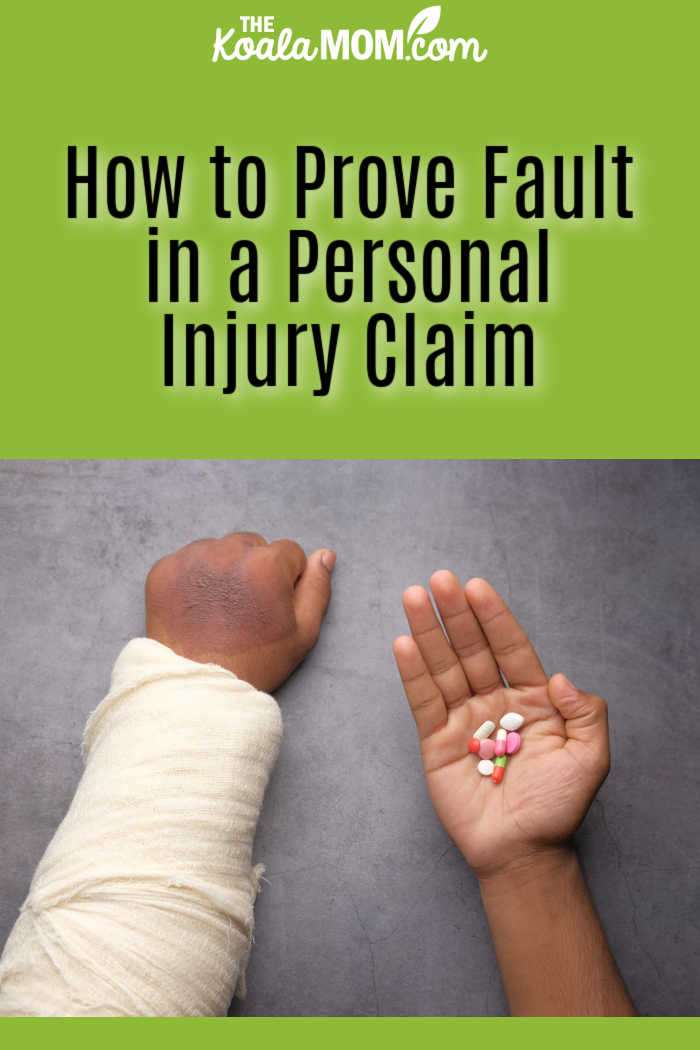Navigating a personal injury claim is a complex process that hinges on establishing fault. This applies whether you’ve been injured in a car accident, slip and fall, or another incident. By proving that another party was negligent, you can seek compensation for any damages sustained. Perhaps you’ve been injured due to the carelessness of another. If so, this article will help you prove fault in a personal injury claim.

Consult with Legal Professionals
The legal process can be highly challenging and complicated. This makes consulting with legal professionals a crucial step in the process. They’ll be able to assess the strength of your case and say how much you could gain in compensation. A lawyer can also guide you through the complexities of proving fault in a personal injury claim. As the legal experts from Malloy Law Offices explain, having experienced attorneys on your side can help you navigate complex legal procedures, negotiate effectively, and maximize the compensation you are entitled to.
By gaining legal advice, you can ensure that your rights are protected at all times. Personal injury lawyers play a pivotal role in negotiating with insurance companies, gathering evidence, and representing your interests in court if necessary.
Research confirms that settlement payouts are higher when lawyers represent their clients, rather than when folks represent themselves. The people who approach the Blumenshine Law Group confirm folks’ desire for free consultations and live chats online. Lawyer websites often display client testimonials and related blog posts, and offer a “no win no fee” arrangement.
Establish Duty of Care
The foundation of any personal injury claim lies in establishing the duty of care owed by the party at fault. Duty of care is a legal requirement to behave responsibly and avoid causing harm to others.
In various situations (such as driving a vehicle or maintaining a property), individuals and entities have a duty to exercise a standard of care. In turn, this serves to prevent foreseeable injuries. Identifying and clearly defining this duty is the first step to prove fault in a personal injury claim.
Demonstrate Breach of Duty
Once the duty of care has been established, the next critical element is demonstrating a breach of that duty. This involves showing that the responsible party failed to meet the standard of care expected in a given situation. This breach may result from negligence, recklessness, or intentional misconduct.
Your lawyer will collect evidence that illustrates how the at-fault party deviated from the duty of care. This evidence can include eyewitness accounts, surveillance footage, expert opinions, and other relevant documentation.
Connect Negligence to Injuries
Proving fault in a personal injury claim doesn’t end with establishing a breach of duty. It also requires demonstrating a direct link between the negligent actions and the injuries sustained. This legal principle is known as causation.
In other words, you must establish that the injuries were a direct result of the defendant’s breach of duty. Medical records, expert testimony, and accident reconstruction can all contribute to building a compelling case for causation.
Address Shared Responsibility
In some cases, multiple parties may share responsibility for an accident or injury. In these situations, it’s crucial to understand the concept of comparative negligence. This legal principle allows for a fair distribution of fault among the parties involved.
The ability to prove the other party’s greater share of negligence is essential for maximizing the compensation you may be entitled to. You therefore need to document and present evidence that highlights the other party’s predominant role in the incident. This is key to navigating a comparative negligence scenario.
Gather Witness Testimonies and Documentation
These are invaluable assets in proving fault in a personal injury claim. Eyewitness accounts provide a real-time perspective on the events leading to the injury. Collect contact information from witnesses and encourage them to provide detailed statements.
Additionally, thorough documentation (such as police reports, medical records, and photographs of the scene) can serve as compelling evidence. These materials help establish the sequence of events, the extent of the injuries, and the conditions that led to the incident.
Seek Expert Opinions and Testimonies
In many personal injury cases, these can significantly strengthen your claim. Experts in relevant fields (such as accident reconstruction, medical professionals, or safety specialists) can provide insights that clarify complex issues.
Their testimonies carry weight in court and help establish the connection between the defendant’s actions and your injuries. It’s wise to engage qualified experts early in the process. This can be a strategic move to build a solid foundation for proving fault.

Winning your personal injury claim requires careful consideration of legal principles, diligent evidence gathering, and strategic planning. By following these key steps and consulting with experienced legal professionals, you can prove fault with confidence. In turn, you can be adequately compensated and move on with your life.

No Responses Yet